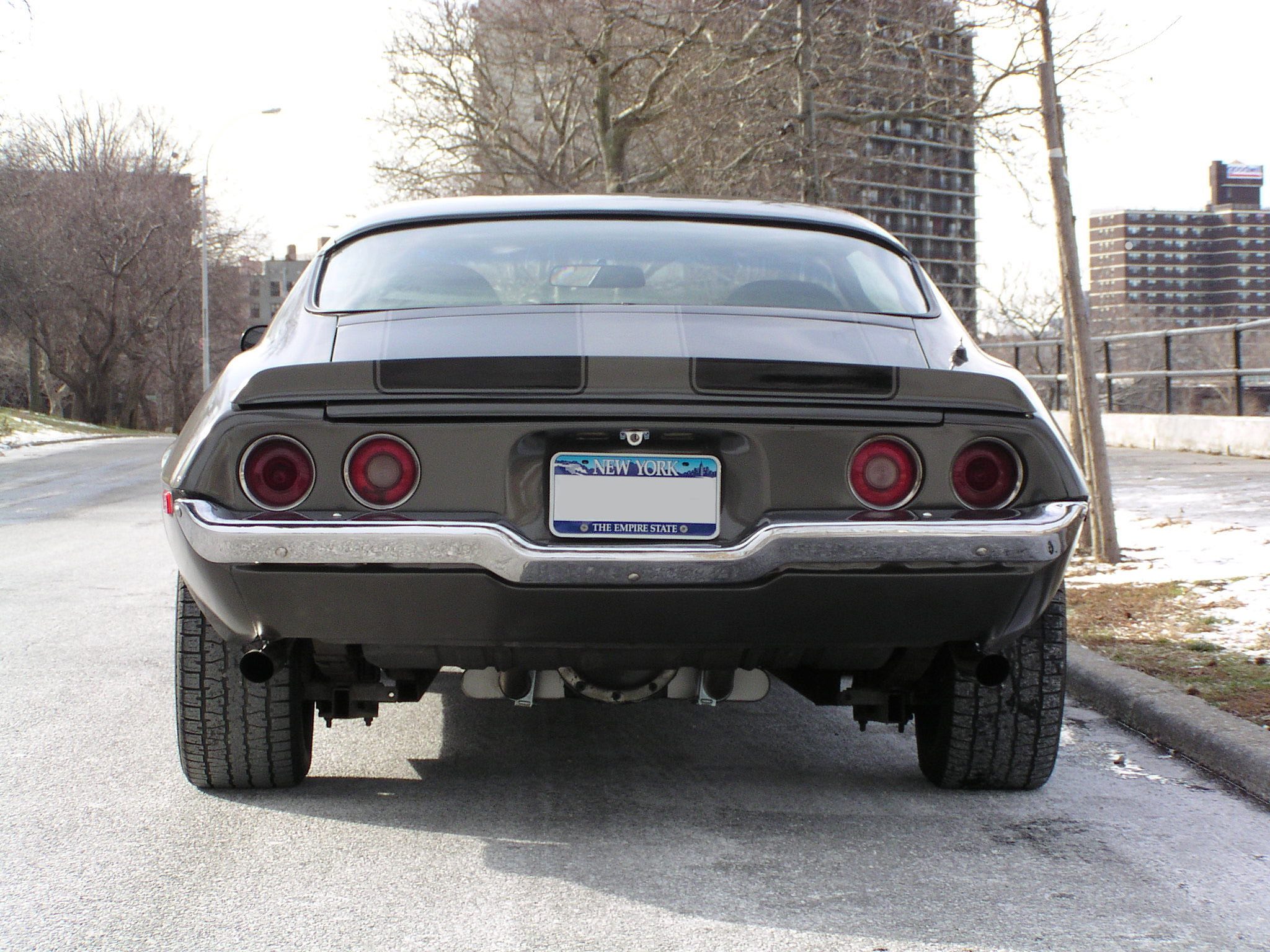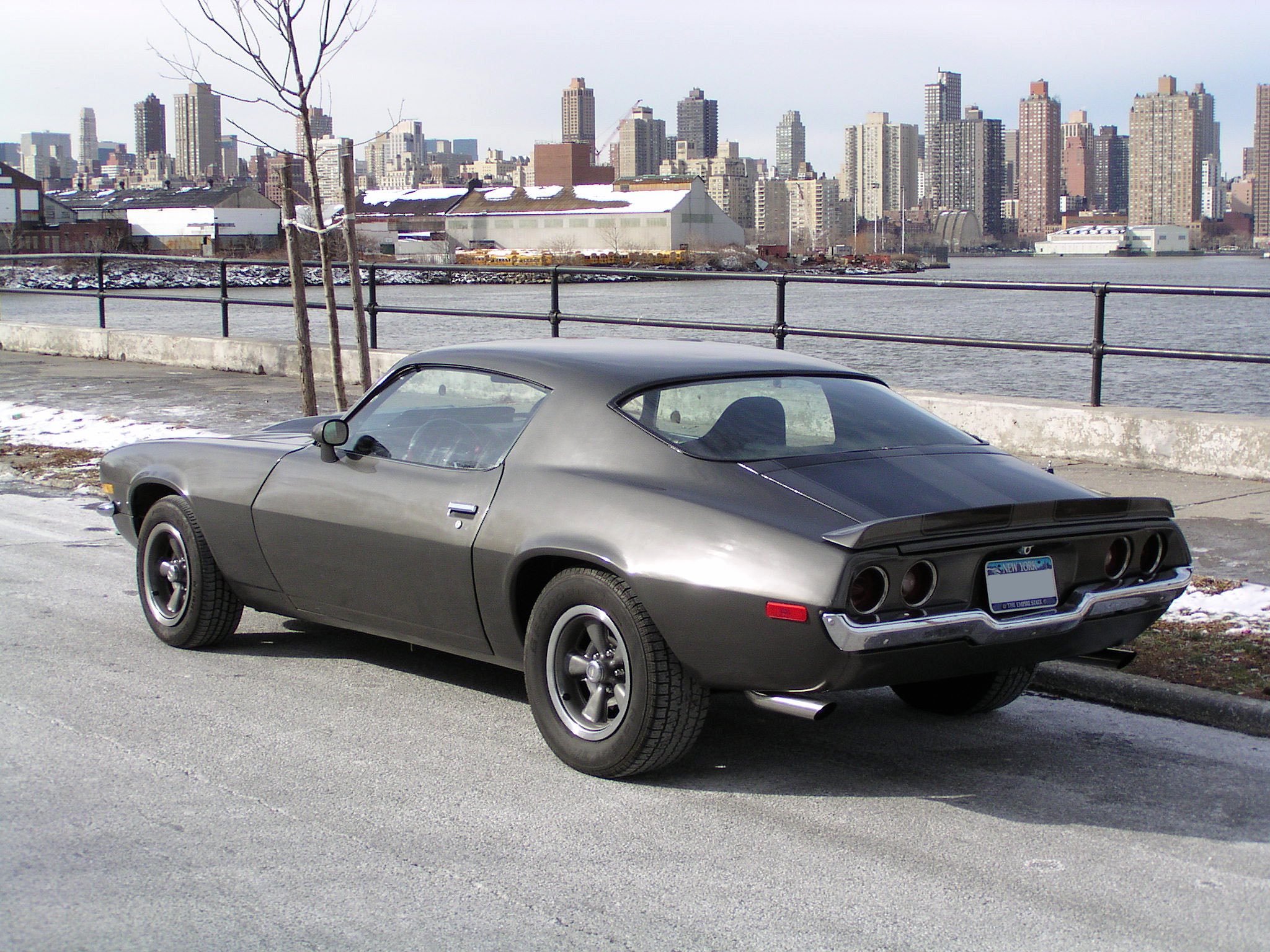Media | Articles
When to walk away from a project car
You know the feeling. The one you get when you open the garage door and see that bottomless pit staring back at you. That black hole of mechanical doom that’s drained most of your savings and vaporized your weekend family time. Then there are the parts, those glorious parts that used to fill you with a sense of pride. Now they terrify you.
In the beginning you had grand ideas, regal even, that you’d be able to transform that rolling mess of metal you purchased into something wonderful. Hell, you’ve been to Sears. You’ve seen tools in person and even watched those car shows where a bunch of clowns build hot rods in a week, between bouts of arguing and finger-pointing. How hard could it possibly be?
Thanks to a Camaro, I found out.
In over my head


When you’ve been in this hobby as long as I have, you’re bound to suffer a misstep or two. And while mine have been few, there was one in particular where I was forced to cut my losses and walk away. The situation stemmed from a lack of knowledge, a bit of naiveté, and becoming emotionally invested in the project.
Marketplace
Buy and sell classics with confidence
Granted, this happened before I was smart enough to know what I didn’t know. But now, as a seasoned enthusiast, I want to share some wisdom that will hopefully keep you from getting in over your head.
I didn’t grow up in a car family. My father liked cars, but turning wrenches was never his thing. Instead we purchased cars when needed and as they failed, they’d be sent off to the mechanic. My adolescent need to tinker grew stronger as I got a bit older, and after getting my first car I dove in headfirst.
From the time I was sixteen until my early-twenties I would wrench on (and subsequently break) everything I owned. I would hang out with my mechanically inclined friends in the hopes that their knowledge would somehow find its way into my head. And while I did get better at basic repairs, I was nowhere near the level of being able to rebuild a vehicle when I bought my first project. It was 2001 and I was about 28 years old.
Enter the Camaro

That project turned out to be a 1970 Chevrolet Camaro. The ad was in a local Buy & Sell paper (remember those?) and it read; 1970 Camaro / 350 small block / 4-speed / needs work but runs. The crappy photo showed the car to be gunmetal gray with split bumpers, black stripes, a cowl hood, rally wheels and a ducktail spoiler. I negotiated the car down to $6k from $10k—at that price I thought I was making out like a bandit.
It wasn’t until I got it home and started pulling it apart that I knew I’d made a terrible mistake. And while it did run well, nothing, and I mean NOTHING was done correctly. The under-dash wiring was a rat’s nest, there was no HVAC and the whine from the rear end almost made one think it had some sort of rear-mounted supercharger. At that point I realized I shelled out $6k for a something that should’ve been $2k.
I foolishly convinced myself that I could save the car and that when completed, I’d be able to get back at least what I’d put into it, and maybe even a few bucks more. I ordered a new wiring harness, new brake parts, a new heater core, shocks, bushings, a new exhaust and a bunch of sound insulation along with a new carpet kit and headliner, all of which totaled up to around $3k. Keep in mind that this was a running and driving car when purchased and that I, your author, by pulling it apart, managed to transformed it into an even bigger pile.
In the beginning I was enthusiastic. I’d made the commitment, bought the parts, and now the only thing left to do was install everything. However, before I did the suspension I opened the rear diff to find it contained almost no fluid and a severely worn ring and pinion. As this was way beyond my mechanical skill, it went to a local mechanic at a cost of about $1k. At this point I was approaching the $10k mark with the understanding that I still hadn’t installed any of the parts I’d purchased. After a few weeks the brakes and suspension were installed with a help of a few buddies. The process was smooth and I was becoming excited again.
That was until I stripped the interior.
Polish and punt


Upon pulling the seats and carpet I found the floors to be completely rusted with patch panels that were held in place by sheet metal screws.
I began to panic.
After consulting with my hot rod buddies we agreed that we should try and polish this turd the best we could, drop back, and punt. We installed the sticky sound deadening material over the patched floor panels all the while convincing ourselves that it would add structural rigidity to the car. We then performed the worst install of a headliner the world has ever seen, complete with a box of self-tapping screws and a few bottles of Gorilla glue (moldings hide a lot). As for the wiring harness, that was sent back knowing that an install attempt by yours truly would burn the car to the ground. Instead we hacked together what was already there and kept a fire extinguisher in the back seat for good measure.
In the end the Camaro was in pretty presentable shape. It started and ran well, sounded great thanks to the new exhaust and all the lights and signals worked. At this point I’d spent around $13k on a car that was worth $6k, and now I had to sell it. And here’s the rub, I’m not an asshole (at least I don’t think I am), thus I couldn’t in good conscience sell the car without disclosing its shortcomings. I listed the car for what I had into it, received a host of calls and eventually sold it for about $8k.


Here’s what I learned from that experience:
- Know what you’re looking at: Upon first seeing those crappy photos in the Buy & Sell I became emotionally invested in a car that I’d yet to view in person and convinced myself I had to have it. Don’t do this.
- Observe your surroundings: The area from which I purchased the car was unsavory to say the least. That’s not always a sure-fire bad thing, but if I’d gone with my gut, I’d have bailed out immediately.
- Bring a friend: More knowledge is always better when you go to inspect a vehicle. This not only provides another set of eyes, but moreover, it’s the voice of reason that will keep your emotions in check.
- Get a PPI: Pre-purchase Inspection. If I had done this, the odds of a bad purchase would have been avoided. I’d have been out $250 instead of $6k.
- Be honest with yourself: If you don’t have the skills to fix a vehicle then understand that you’ll be paying someone else to do it for you. This is expensive.
- Pry before you buy: Ask the seller as many probing questions as you can in regards to ownership, previous maintenance and past records.
- Make sure you can afford it: If after the above questions are answered, check that bank account of yours. If there is even the slightest doubt about your funds, don’t do it, as project cars can become a money pit that can ruin what was meant to be an otherwise great automotive experience.
I had taken almost a $6000 loss, or exactly what I’d paid for the car in the first place. Back then it was a devastating financial hit that taught me one very important lesson: I should have walked away.













